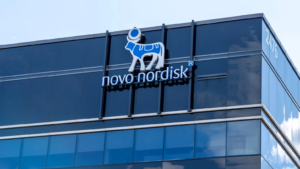Shares of the companies producing these drugs soared in 2023 as demand outstripped supply and projections suggesting a market growth to $150 billion annually within the next decade. The surge is driven by the drugs’ effectiveness not only in weight loss but also in potentially improving overall health, such as reducing heart failure symptoms.
The accessibility of these treatments is hindered by insurance hurdles, notably Medicare’s exclusion of weight loss medication coverage due to a 2003 law, raising concerns about equitable access to potentially life-saving treatments.
The escalating demand has led to shortages, fueling fears about patients turning to the black market for alternatives, which could have dangerous consequences. As the world grapples with these issues, the long-term health impacts and the economic implications of the obesity drug boom remain critical areas for ongoing scrutiny and policy adaptation.
Nearly a quarter of the world’s population will be obese by 2035, a significant increase from 14% in 2020, according to latest projections. In the United States alone, the economic fallout from obesity is staggering, with the negative impact on the gross domestic product (GDP) estimated at 3.6%. According to Morgan Stanley (NYSE:MS), this figure translates into a potential $1.24 trillion in indirect costs, primarily due to lost productivity.
Let’s take a look at the top three obesity drug stocks set to skyrocket.
Eli Lilly (LLY)

Eli Lilly (NYSE:LLY) is a global pharmaceutical leader which has made significant strides in the obesity treatment market with its innovative product, Mounjaro (tirzepatide). Mounjaro, initially approved for managing type 2 diabetes, has shown promising results in weight loss, positioning it as a potential game-changer in obesity management.
Eli Lilly’s diabetes medication, Mounjaro, achieved an impressive $5 billion in sales during 2023, its debut year, indicating a high demand for this therapy and similar drugs. The strong performance contributed to Lilly’s annual revenue reaching $34 billion, marking a 20% growth from the previous year.
In the fourth quarter alone, revenue hit $9.35 billion, surpassing expectations by 5%. Mounjaro now represents 27% of all U.S. prescriptions for injectable incretins, a class of drugs that enhance insulin production through hormone modulation.
Meanwhile, sales for Trulicity, Lilly’s older incretin-based drug, declined by 4% to $7 billion, though it remains a key product. Additionally, Lilly’s obesity drug Zepbound, sharing Mounjaro’s active ingredient, launched in the fourth quarter, generating $176 million in sales by year-end. According to Morgan Stanley’s projection, Zepbound could generate between $2.2 billion and $2.7 in sales.
Novo Nordisk (NVO)

Novo Nordisk A/S (NYSE:NVO) is also at the forefront of the obesity treatment market with its revolutionary drugs, Saxenda and Wegovy. These revolutionary products, which suppress appetite and promote weight loss, pushed NVO stock to record highs and positioned it as one of the top obesity drug stocks to buy.
In January, the Danish pharmaceutical giant announced a surge in sales for its renowned obesity and diabetes medications, Wegovy and Ozempic, propelling its valuation beyond the $500 billion mark.
The stock price surge has established Novo Nordisk as Europe’s highest-valued firm, surpassing even luxury behemoth LVMH. The obesity drug sector saw a staggering 154% increase in sales, primarily driven by Wegovy, while diabetes medication sales, including Ozempic, rose by 52%.
Sales in the Diabetes and Obesity care sector rose by 38% to DKK 215.1 billion, with a remarkable 42% growth at constant exchange rates. This significant increase was primarily propelled by a 48% growth in GLP-1 diabetes treatment sales, which reached 52% in constant rates. Furthermore, the Obesity care segment was up by 147% in Danish Kroner to 41.6 billion, and achieved an even more impressive 154% growth at constant exchange rates.
DexCom (DXCM)

DexCom (NASDAQ:DXCM) is one of the major players in glucose monitoring technology, primarily focusing on diabetes management rather than obesity products. The company’s Continuous Glucose Monitoring (CGM) systems provide real-time glucose readings, aiding people with diabetes in managing their condition and potentially contributing to obesity management by enabling better glycemic control.
Back in February, Dexcom reported a 27% increase in revenue to $1.03 billion in the fourth quarter of 2023 compared to the previous year, with both U.S. and international markets contributing equally to this growth. The company’s operating income rose to $216.9 million for the same period of the year.
On the strategic front, Dexcom submitted Stelo, a new sensor for type 2 diabetes patients not on insulin, for FDA review and enhanced its pump connectivity options. This includes the integration with Tandem Diabetes Care’s t:slim X2 insulin pump and Beta Bionics’ iLet Bionic Pancreas. Moreover, Dexcom is innovating with a direct-to-watch feature pending FDA approval, allowing users to receive glucose readings directly on a smartwatch.
On the date of publication, Shane Neagle did not hold (either directly or indirectly) any positions in the securities mentioned in this article. The opinions expressed in this article are those of the writer, subject to the InvestorPlace.com Publishing Guidelines.
Shane Neagle is fascinated by the ways in which technology is poised to disrupt investing. He specializes in fundamental analysis and growth investing.
